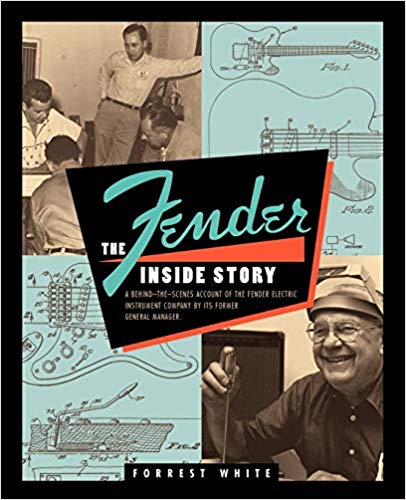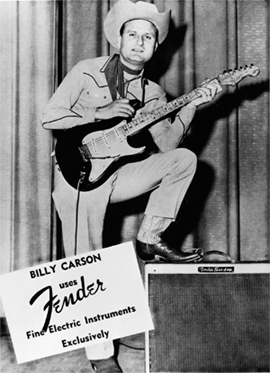Editor's note: This post is part of a series of unpublished interviews from the personal research archive of noted guitar writer Tony Bacon. For another take on this period of Fender's history, take a look at Tony's interview with Don Randall, Leo Fender's business partner that was integral to the company's success, even though the pair had a contentious relationship.
Tony has also talked at length with George Fullerton, a close confidant, friend, and partner to Leo at Fender and G&L, as well as to Dan Smith, a Fender executive that helped the company regain its footing in the 1980s.
I interviewed Forrest White (1920–1994) when I was researching my first book about Fender in 1992. Forrest ran the factory from the time he started at Fender in 1954 until his departure in 1967 following CBS's takeover of the company.
We met at the retirement home in Palm Springs, California, where Forrest was living. Before we started the interview, he was keen to tell me who I should trust and who I should be wary of among the other ex-Fender people I was talking to on my trip. When I thanked him for the information and assured him I would make up my own mind, he seemed unimpressed.
It became evident after I pushed the record button on my cassette machine that Forrest's years at Fender had been a magical time in his life, and that he had forthright views on the value of his own contributions to the company as well as those of his colleagues.
How did you meet Leo Fender, Forrest?
I was an industrial engineer at Goodyear Aircraft in Ohio back in the '40s, and they sent me out from Akron to Los Angeles to write the procedure for building the tail section of the Lockheed P-38 fighter plane. I more or less fell in love with California, and I came back to visit a couple of times.
Anyway, there was a show in Akron with a few artists—this is after I had built my own solidbody guitar, must have been 1948, '49 maybe—and I heard this steel guitar, fantastic sound. I thought Wow, that sounds great.
I didn't recognize the guitar or the amplifier. So I went backstage after the thing was over, talked to this guy Bob Foster who was the steel guitar player with Cowboy Copas. I pointed at his guitar, his amplifier, asked what it was. And he said, "That's made by Fender." Fender? I'd never heard of it. He says, "Well, it's a place in Fullerton, California."
I was so impressed with the sound that when I came back to California to visit in the late '40s I made a point to look up Leo Fender and meet him. That's when he took a picture of me with my 10-string steel guitar I had built—he was so impressed with it. I met Paul Bigsby the same day, the guy that made that solidbody guitar for Merle Travis. Then I went back to Akron, and I didn't think much more of it.
In 1951, we moved out to California, landed up in Riverside—I became an industrial engineer for a company up there. I went round to have lunch with Leo one day, this would have been the spring of '54. Freddie Tavares had just started to work for him, in September of '53. George Fullerton had the title of production foreman. Now, thing is, George really didn't have much to… but that's another story, really.
Leo said to me, "Hey, I'm having trouble with management." Freddie had told him the thing's ready to go down the drain. Fender was almost on the rocks. He had no credit whatsoever, had to pay cash buying any material and so on. Some of the employees' checks were bouncing.
Freddie told me later that after he started with Leo in '53, one evening he and Leo sat down after working hours, and Leo says, "Freddie, what are we gonna do? We have serious problems." That's when Freddie told him there was no one in the plant that could do what he needed done, so he'd have to bring someone in from the outside.
Sounds like your timing was good.
It just so happened that my timing was right. I had no idea that Leo had problems, so I went down, had lunch with him one Sunday, and he says, "Hey, I've been looking for someone for some time with your experience to help me with the management of the company. Would you be interested?"
I said, "Well, Leo, I've got a pretty good job now. I'm not sure whether I'd be interested or not." I told him I'd like to take a look at the operation. Well, I looked at it. And it was a mess. There was no planning whatsoever—because Leo was not an engineer, he was an accountant. They had just moved into his place at 500 South Raymond, and he had four buildings there, 40 by 120. Things had just been set down any place.
You know, in manufacturing you should have a flowchart so that things run slowly, from one operation to another. Man! Everything was just so mixed up, you can't believe it. There was no planning whatsoever, because in all fairness to him he didn't have any experience in things like that. George was a former truck driver, so he didn't have any experience either. I looked at that and thought, Oh my lord! Wow!
You must have felt like walking right out again.
Yeah [laughs]. I said, "Leo, what kind of a production control do you have?" He asked me what I meant by that. I said, "Well, how do you know when it's time to order parts?" He told me that was easy and offered to show me. He took me to the stockroom, and—now, understand that Leo was my dear friend. He told me that I was the closest friend he had in this world. But anyhow, everything was all messed up. And George didn't know the difference. He just thought everything was fine.
When they'd run out of parts, people would walk slowly down to the stockroom, look around for their parts themselves—I couldn't believe this! I said, "Leo, I'll come in and help you, but it depends on one thing. If I can have a free hand to do what I know has to be done, fine. Otherwise I'm not interested."
He gave me that free hand. When I stepped in, from that point on I ran the company. He stayed in design, but I ran it. I set up a production control system that we used throughout the years. We never ran out of anything. Things went on from that point.
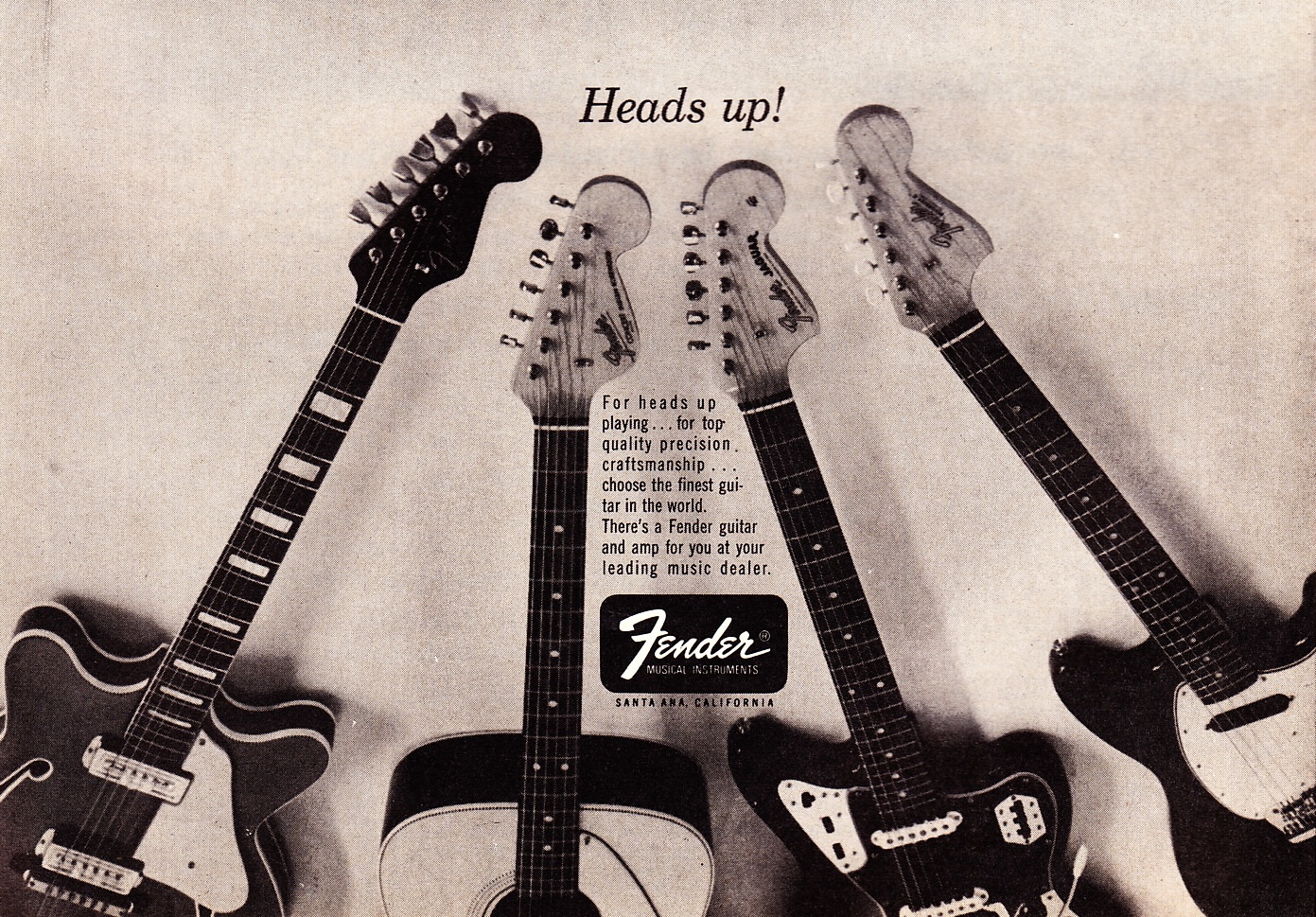
How many people were working there when you started in '54?
Around 40 when I started. And when CBS came into the picture, in '65, we had about 800. It grew gradually, just a constant uphill. Worked all kinds of hours.
And how many guitars were Fender producing when you joined?
When I started with Leo, the production was very low, that was in May of '54. The Stratocaster had been designed but there was no production yet, so they had the Telecaster, the Esquire, and the Precision Bass [and some steels]. They had the Pro Amp, the Super Amp, the Bassman [and a few other amps]. The first production run of the Stratocaster was in October of 1954, then later the Jazzmaster came along, in '57.
What did you change first to make production run smoothly?
As fast as I could, I rearranged the whole darn plant. Everything got separated—the guitars and the amplifiers, for one thing. Everything then had a constant flow. Then I set an incentive, and I tied the incentive into quality control. You take chances if you set in an incentive plan and you don't tie it in to quality control. Because people turn the thing out and to heck with the quality.
It was set up so that each operator was an inspector. So if you were on an assembly line and you did your job before it passes on to me, if it came over to me and I saw there was something wrong there that you hadn't done right, I'd say, "Hey, take it back Tony, do it right, and then I'll accept it." So every operator was an inspector, too. And if they had to rework it, it was on their own time.
As long as they turned out good production that passed, they made good money, darned good money. But if someone loused up, hey, once I accept it, then it's my problem. Follow me? So I tied this incentive into quality. George didn't know anything about it, Leo didn't know anything about it—I had to take care of it all myself.
What were the reactions of musicians to those early guitars?
Oh, they loved 'em. Now the dealers, they were wary. "Hey, what kind of a thing is this? Man, here's a board with strings on it." When the guitar was first shown in Chicago, I guess you know, they called it the toilet seat with strings, the canoe paddle.
Then the following year, when he brought out the electric bass, anyone who wondered whether he was crazy or not, well, then they knew he was crazy. Who in the world is gonna play an electric bass? [Laughs.] Leo Fender is a nut! Well, today, you try and find an upright bass. It's pretty hard.
What was the construction process in the mid-'50s, after you'd sorted things out?
There was nothing as far as sophisticated tooling. We didn't have the money for anything like that. So, we bought our lumber—it would come in as long lengths, 18, 20 feet long, ash or alder, whatever we were making. We'd make the Telecasters out of ash, because of the blond finish. You'd cut the bodies into the proper length, glued together, so you'd have a block of wood that was the size of a guitar body.
We had what we called router plates made out of quarter-inch steel, the shape of the guitar body, two different plates. You'd attach one to the bottom with a couple of screws there—you could drill on the one side where the neck plate and everything went, and on the other side where the pickups and everything ran.
So you always had a minimum of two plates, sometimes three, depending on how sophisticated the instrument was. The thing was down there and you'd screw that on, you'd trace around and bandsaw it roughly to shape, and then on the router you'd rout around and take off the excess.
Then the necks. For ovaling, we had a couple of holders swinging back and forth, and then there was a mandrel that had the holes cut out for the frets. Actually, most of the power tooling—I'm not talking about punch presses and things like that, because we made all our metal parts, too—but Leo designed all of the tooling, or most of it, himself.
Leo was sharp mechanically, even though he was not an engineer. The man was sharp as a tack. The tooling was very simple, but it was a case of you had to crawl before you walked, walk before you ran. We didn't get any computerized routers and so on like they have today, where you can cut out half a dozen necks at a time. It was one at a time back then, and everything was simple. Crude, really, but it got the job done.
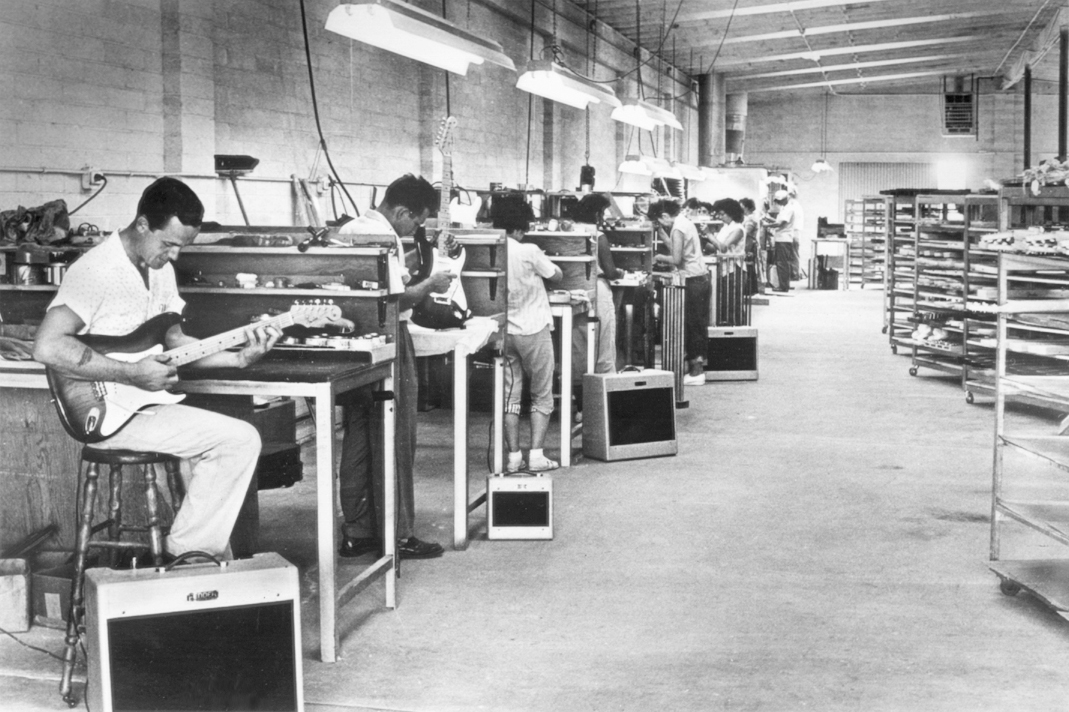
Did it change much over the years you were there?
Not too much, really. Later on we had better sanding equipment. And where we used to glue the bodies together with separate little C-clamps and put them on the floor, we got one of these big clamps that ran on a deal—it was improved to a certain extent. But, again, nothing like they have today.
What was the relationship like at Fender between you in the factory and the sales department?
Well, here's something that'll amaze you. From the time I started in 1954 until the time CBS took over in January 1965, I was not allowed to have any information at all on the inventory or back-order situation from Fender Sales. The reason being that Leo and [Fender Sales boss] Don Randall didn't get along at all. If you can imagine it, I had to run that company guessing what they had in inventory. Now stop to think about that.
As the company grew, I didn't know whether to run Telecasters, Stratocasters, Jazzmasters—I had to guess. And then when I asked Don for the information he said, "It's none of your business." Now Don and I are good friends today, you understand? We were friendly enough then, but where I had the problem was that I was in between Leo and Don. They really didn't get along, and each one's bouncing off of me. I had to run that company. I made the decisions, no one else.
Why didn't Don and Leo get on?
Because these two people wanted things their way, and neither would tell the other what they were doing. They were both like that.
Can you give me an example?
Leo would design a line of amplifiers—they might have 14 different models of amplifiers. Don would order a new bunch of covers, then find out Leo had redesigned the amplifier line and nothing would fit. So yeah, we had a lot of fun like that! People don't realize some of the fun we had.
But I tell people that the best thing ever happened to Leo was the fact that he met Don Randall and that Don took over sales. Because you can have the best product in the world, but if people don't know about it, it doesn't do you any good. Don was able to market that product. Don made people Fender-conscious, told them we have a guitar here that is the best, we have an amplifier that's the best. He took it from there and promoted the darned thing—and I had to work like a devil to keep up the production.
What were your impressions of Leo Fender?
Leo and I were very close. I had a relationship with him where I could tell him what I thought. I told him I want a free hand, and if I think something's wrong I want a free hand to tell you. That's the way it had to be.
Others have told me Leo was different from other people in the way he worked. Was that your impression?
Very much so. Leo was a workaholic, he was just work, work, work. He was in that plant a lot of times when he shouldn't have been, when he was really feeling rough. But boy, he wouldn't give up. Things were pretty rough for him in the early days, you know, and he just worked like a demon. And I'll tell you something, he was always trying to perfect something.
With those larger amps, there was hardly any two production runs that were the same as far as the chassis was concerned. Leo would go round and he'd be working on something that he thought he'd change in the amplifier. And I'd got the responsibility of running the plant. At that time, we'd be using maybe one resistor of one kind and ten of another on an amplifier.
Well, he'd go in there and make a change, and maybe where the one was, we'd use six of those, and only two of the one we were using ten of before. So then the guy that was doing the testing, the guy at the head of the amplifier department, he'd wonder why he couldn't get his voltages to check out right—because all the voltages had been changed.
Dick Stout ran the amplifier thing, he says, "Forrest, I've had it, I've been working on an amplifier chassis out there, trying to get it to check out for the last three hours." And I find out Leo's been at it again, changed it and didn't say a thing. I said, "Dick, I'll take care of this." So I put on the bulletin board: "Notice: Any employee making any kind of production change on assembly or otherwise, without previous authorization from your immediate supervisor, is subject to immediate termination."
About 15 minutes later, Leo came in my office. "Blalalalalalalala! This is my company, you'd think I'd be able to do as I so-and-so please!" I says, "You can Leo, fine, it's your responsibility now. You take it over. From now on, I'm gonna do just what you want me to do, but buddy, it's not my responsibility, it's your responsibility." And then I asked him what he wanted me to do first. "Blalalala!" I said, "Leo, if you take that sign down, then you run it. Not me." And I didn't have any more problems with him.
Sounds like the day-to-day could be difficult for you, especially with Leo.
Tony, I loved the guy. But I had to fight him in order to help him. I was the only one that did that. Now Don and Leo, the fights they had were just disagreements. Leo knew that when I had a fight with him I was trying to help him.
I have a clock barometer at home that Leo gave to me, after he sold [Fender to CBS]. About 30 days after I let him out of the plant for the last time, he came over my house. Leo and Esther [Leo's first wife] lived right across the street from us. I drew the plans for his home, that's how close we were.
He came over, knocked on the door, big grin on his face: "Got something for you." I says, "What is it Leo?" Opened it up, here's this nice clock barometer, real expensive one, had a plaque on it: "To Forrest White, in appreciation of many things, Leo Fender."
Leo was not one to give compliments. But he knew I had to fight him in order to help him. Leo was not a manager—because he didn't want to be a manager. This isn't what he did. He could come in the place in the morning, and buddy, he had something in his mind that he wanted to try. The place is burning down? Let it burn down—he wanted to do what he was on.
Maybe give me an example, Forrest?
I'd been there maybe two or three months, and there was something came up that was real important and I felt Leo should be briefed on. So I go in his lab, said look, there's something I'd like to kick around with you. He had his head in an amplifier, working on it.
So I'm waiting, waiting patiently. "I'm sorry if you've got a lot to do," I says, "but there's something I'd like to tell you." Oh—and he mumbled something. So I tells him again, and he turns around, he slams the screwdriver down on the bench. "Look, I've got my problems, you've got your problems, now you take care of your problems and I'll take care of my problems!" And from that time on, I signed leases for the buildings, I made the decisions for expansions, all these things.
Another example. He was so gun-shy that it took him a while before he would let me do too much to begin with. I remember when I went in, there was no place to hang my jacket. Here's the door, here's the window, and here's a little place about this long [Forrest puts his hands a few feet apart].
I told Leo I'd like to put up a one-by-four board there with three hooks in it so we can hang our jackets. "I don't know Forrest, you better wait, I won't have time to do that." I says why, Leo? "Well, you know, I like to have things done a certain way."
I says, "Leo, let me tell you something. My dad was a building contractor, I can build a house from the ground up. So I think I have sense enough to put up that board with three hooks." I told him I have a level and I know how to use one, and to rest assured it would be neat.
He was gun-shy because he had no one that he could trust to do the job. He'd been burned so many times, he was afraid to let anyone else do it, because people didn't seem to give a dang, or couldn't do it—one or the other.
So, finally I did the board and hooks, and then I told Leo I wanted him to look at it. "Here's a level, Leo. Check it." And he sort of grinned sheepishly. Leo wouldn't take a vacation the first year—he was afraid to take a vacation, afraid the thing would go down the drain while he was gone. It was the second year he took a vacation.
When he came back, he didn't tell me, but he told Karl [Olmsted] and Lymon [Race, at Race & Olmsted, Fender's tool-and-die supplier], he said to them, "I'm almost afraid to go away again—the place is running better after I came back than it was when I left."
Did Leo give much credit when people came up with ideas for an instrument or an amp?
Well, I didn't ever get credit on mine. I even drew the floor plan on Leo's home and didn't get any credit for it [laughs]. But you could tell Leo something, and you'd give him an idea. You could tell he'd be thinking, he'd be looking at you and thinking, see. Wouldn't say a thing, wouldn't agree that you'd even told him anything. Then later on it would show up on something.
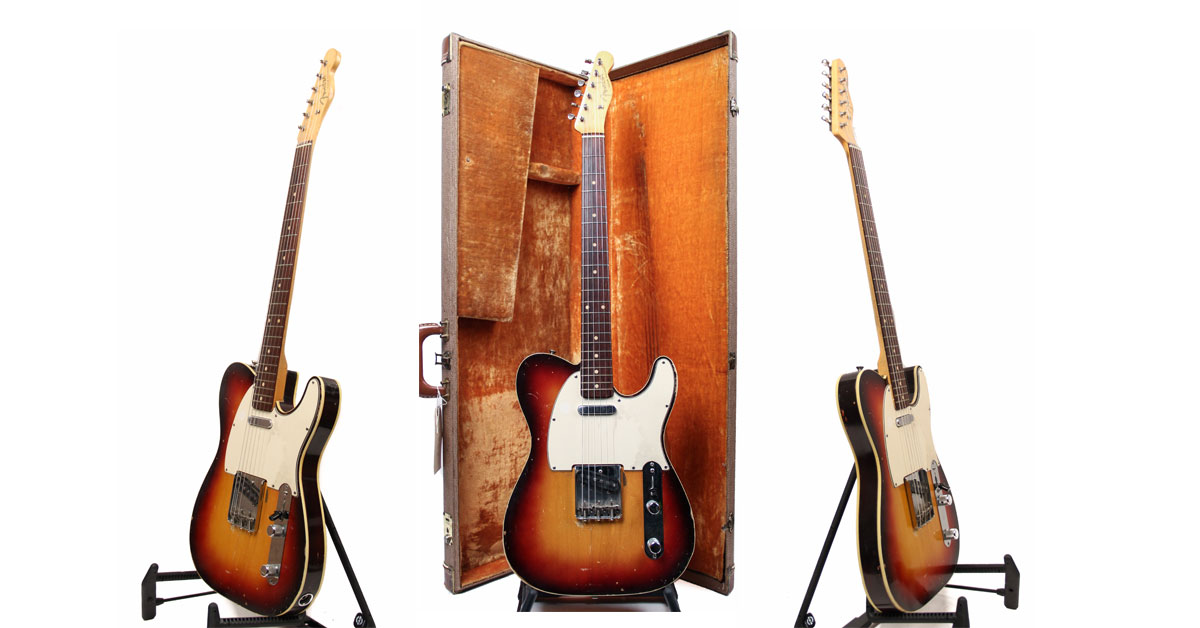
So you came up with some ideas that turned up on the guitars?
I was the one that came up with body binding. Leo didn't have anything to do with that, so don't let anyone tell you any different. The guitars I made with binding on were made for Buck Owens, in the early years.
I was at one of the music shows, and I told Fred Martin at the Martin company that I'd like to put binding around a Telecaster but I didn't know a darned thing about it, what kind of adhesive to use, what material to use for the body. And he said, "Well, you stop by the plant and I'll show you." So I stopped by and they showed me how they cut the binding material, how they bought in the sheets and cut it into strips, showed me what kind of adhesive to use.
So I made these guitars for Buck Owens, and also I used ground-up glass in the finish to try to give it a sparkle. I made three Telecasters in case one of them went bad. One was for Buck, the other was for Don Rich, and then I made a Precision Bass, used the same color, sort of a grayish sparkle, and those instruments were the first ones that had binding [on the body].
After Fender Sales saw what they looked like, they said, look, would you like to make up a sunburst Telecaster and a blond Telecaster and put white binding on? So we showed them that. [The Custom Telecaster and Custom Esquire with bound sunburst bodies went into production from 1959.]
Course, you couldn't do anything like that on the Stratocaster because of the shape of the body. Also, that pickguard material we used, where we bevelled round the side on a 45 degree angle, that was my baby too—I went to the company and said we wanted the stuff laminated.
Did you have to take care of things like the serial number system?
"Well, yes, and I get so sick and tired of these people who write about the history of what happened at Fender, the people who can tell you what year the guitars were made by serial number. That's a bunch of crap. We had no system."
When I started there, I said to Leo, "How are you keeping track of your serial numbers?" He asked me what I meant. "I mean so people'll know when instruments were made." And he said, "Oh, that's red tape, I don't like that." Same thing with the control systems—he says, "I don't like red tape." I said, "Leo, I'll put in something that'll just be a minimum control, but we have to have a certain amount of control, or forget it."
So as an example, what would happen is you've got a bin here. In the early years, 5,000 was a run. So you make the neck plates, all serial-numbered. So here they are, you dunk them in a pan, take them to the plater. Come back, dunk them in a bin. Now they're all mixed up. Let's say I had ten production runs. The one I ran first, it's still at the bottom of the bin. You understand where I'm coming from? There's no way, rhyme, nor reason.
So when people come up with, Oh, this was the way that you figure it out, I read that stuff and I say Fender fiction is what I call it—Fender fiction.
You're saying there was no particular chronological scheme to the serial numbers. In that case, what were they for?
Well, you had to have a number, because if you want to insure the instrument you've bought—it's number 0014, say—for insurance you've got to have a serial number on the instrument. Otherwise, how would you keep track of what you'd produced? And we'd have an invoice: Stratocaster number 0014, Telecaster 0152, whatever, so you had that list, and you had the serial numbers on back of what you sent to the sales office. And they had to check off to see if they had every instrument that they said they had. Otherwise there'd be no way of keeping control over that.
Many old Fenders seem to have an individual character, don't you think?
Well yeah, and there was a reason for that. With Leo, musicians would come in and each musician had his own idea of how things should sound. So to begin with, Bill Carson had quite a bit to do with things when Leo first made the Telecaster and the Esquire. The bridge there had three sections, and Carson said to Leo there was no way he could get proper intonation, says there should be a separate bridge section for each string.
So that's where Carson came into the picture on the Stratocaster, with six bridge sections, one for each string. No other guitar had that.
I guess there must have been some mistakes made during the time you were at Fender?
The aluminum pickguards [which briefly appeared on early Jazzmasters and a few other models], they were a catastrophe. I told Leo that to begin with. It was his idea. I had worked on aircraft, and I said Leo, don't do that, you'll wear through that anodized finish and it'll look like the very devil.
As far as shielding, it worked great. Looked nice to begin with—mount your controls on there, no problem at all—worked great as far as the electronic and mechanical end. But after the guy played it for a while, first thing you know you're wearing through the doggone deal. I tried to tell him. He didn't like that, but it was true. So that was a catastrophe.
And in the early years he made some mistakes when he built some steel guitars with oak. Oak has acid that really eats up—I mean, it's very successful for furniture, but this oak he used, the acid from that, you can't believe what happened to the finish and the chrome parts. He had a big bonfire out back [laughs]. That was about the worst problem he had.
How many guitars were Fender making through the years you were there?
We were making around 1,500 guitars a week when CBS took over the thing in January of 1965. When I started, in '54, we were making about 40 a week. So it grew gradually up to the time CBS bought it.
Do you think the quality of the guitars deteriorated after CBS took over?
Oh, it was terrible. Again, it goes back to cost. They brought in some guy in purchasing, didn't know one thing about musical instruments. Someone comes in selling a bunch of magnet wire he wanted to clear out, made this boast that we were paying too much for everything, and boy he was gonna save the company all kinds of money.
So this idiot, to him, magnet wire was magnet wire—the heck with gauge and coating and everything—that was not important. He buys all this crap, and when I found out, I says, "Man, we can't make our pickups with this stuff, it's not the right specification." But I was told we were going to use it. Just imagine what's happening to the sound of the guitar.
They took away the incentive that was tied into the quality control. So the strings would be way too high off the neck, they played terrible—the quality just went out the cotton-picking window. Terrible. They practically ruined the company.

After the end of the second year, they said, OK, we're ready to build this new series of amplifiers, the solid state crap that they wanted to build. [The shortlived Solid State series included versions of the Bassman, Deluxe Reverb, Pro Reverb, Super Reverb, Twin Reverb, and Vibrolux Reverb.] The way it was designed was terrible. You couldn't service the amplifier, real bad.
That was the first time I had seen it—they took purchasing and everything away, because they had their own specialists. CBS had a vice president for everything you could think of. I think they had a vice president for cleaning the toilets. You name it, whatever it was, it had a vice president.
This series of amplifiers, I said there's no way I'm having anything to do with building that because that's not worthy of Leo Fender's name. I said I will not sign it off for production. And I was the only one loyal enough or thought enough of him. So I left CBS–Fender in '67. I didn't care what they did after that.
Tell me about the White amplifiers.
Leo named a line after me. There was a student line we were going to build, in the heyday of Fender, the latter '50s, we were going to build three-quarter guitars and amplifiers for students only. He named the line after me, White, and we made an amp and a steel guitar.
I couldn't make enough Fender guitars, so we never did get the White standard [Spanish] guitar made. There was a prototype made, but we never did get it made. Couldn't build guitars that fast.
That reminds me of something you mentioned earlier—I think you said you made a couple of guitars for yourself before you met Leo?
Yes, I built a solid guitar way before Leo did. Solidbody, standard, built my own pickups and the whole thing. I put in a circuit where you could just flip the switch and go from preset rhythm to lead. And that was 1944 that I made that solidbody guitar.
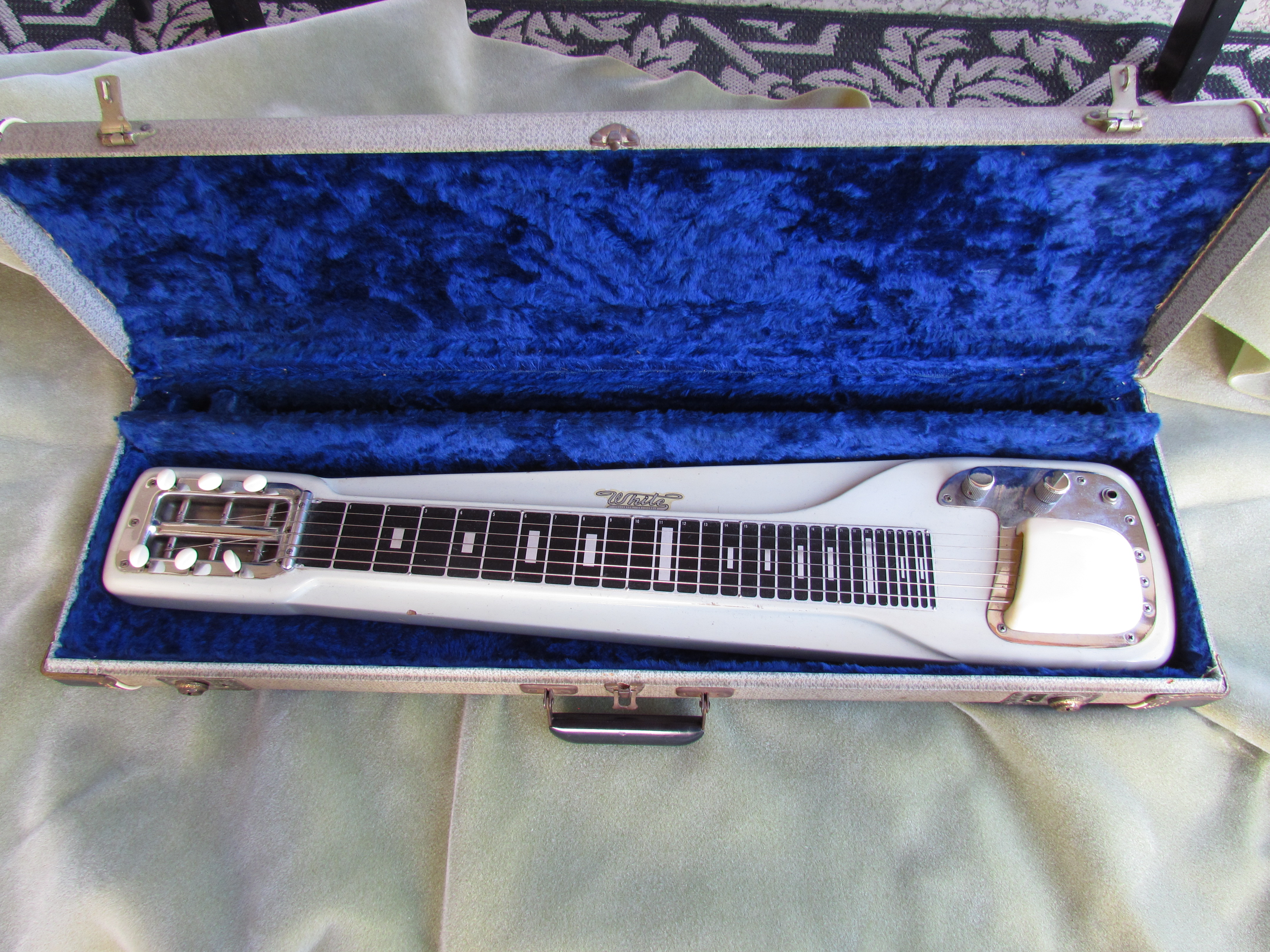
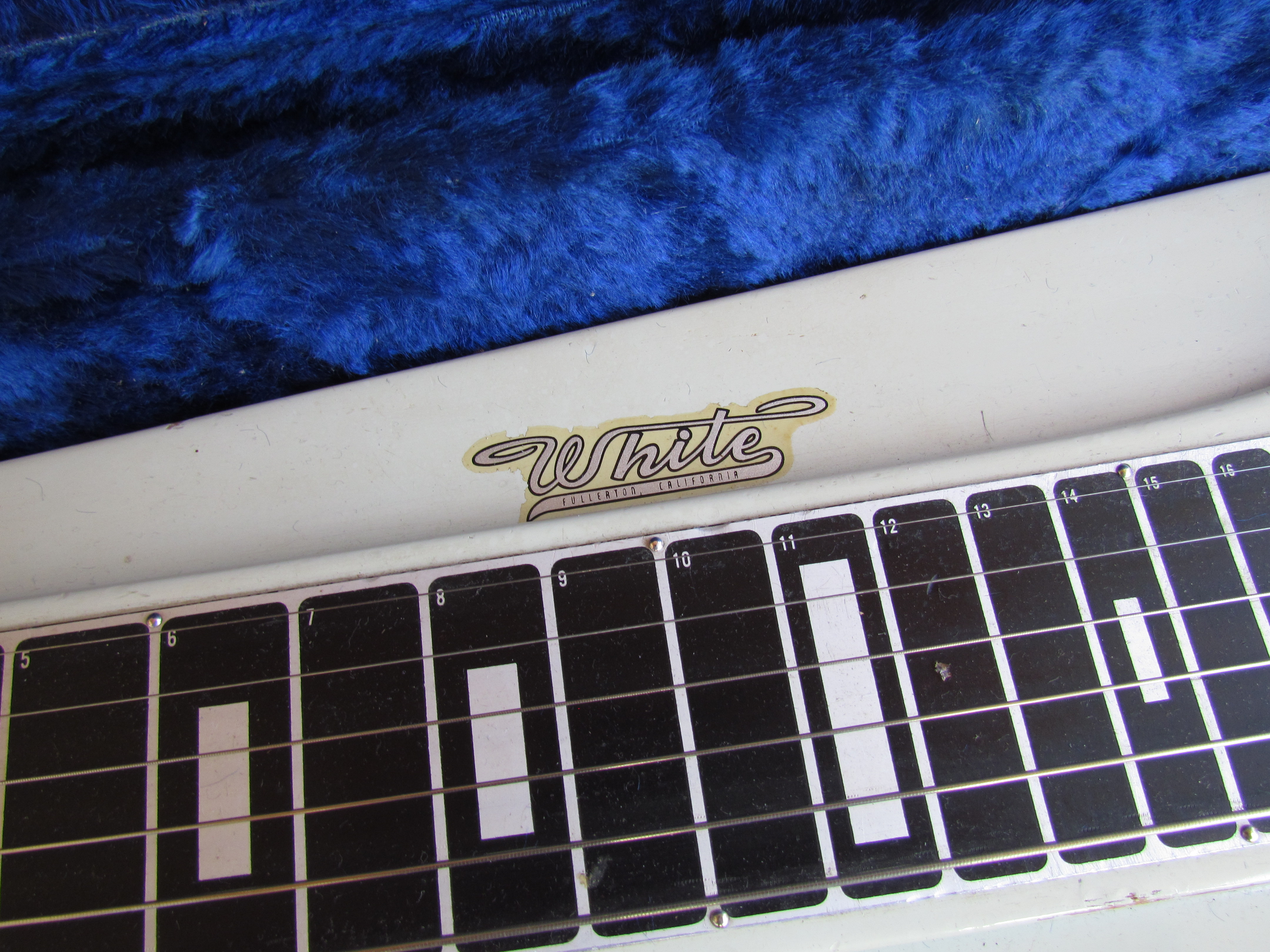
Now the neck I had on that guitar, it had real sharp frets on it, could rip your fingers apart. I put that thing down—you really couldn't play it because of that neck. So I built a ten-string steel guitar that had a locking nut, in 1946, way before I even knew there was a thing called Leo Fender.
I saw Alvino Rey at the Paramount Theater in Akron, and he had to keep fiddling with his guitar when he wanted to change from rhythm to lead. I thought, Well, that's a bunch of garbage, there's no reason why he would have to do that. And then when I started working for Leo, I said to him, "What you need is a guitar where you can preset the rhythm and lead." Leo didn't play guitar, couldn't even tune a guitar. So he didn't think this was important.
Alvino Rey came in the plant one day, so I said, "How would you like to have your guitar fixed so you wouldn't have to mess around with the controls, you just flip the switch?" He says, "Well, can that be done?" I said, "Well sure, I already did it." So Leo brought the Jazzmaster out in 1957, and that's the first guitar that had the deal where you could switch between rhythm and lead. And that came from my guitar that I made back in the '40s.
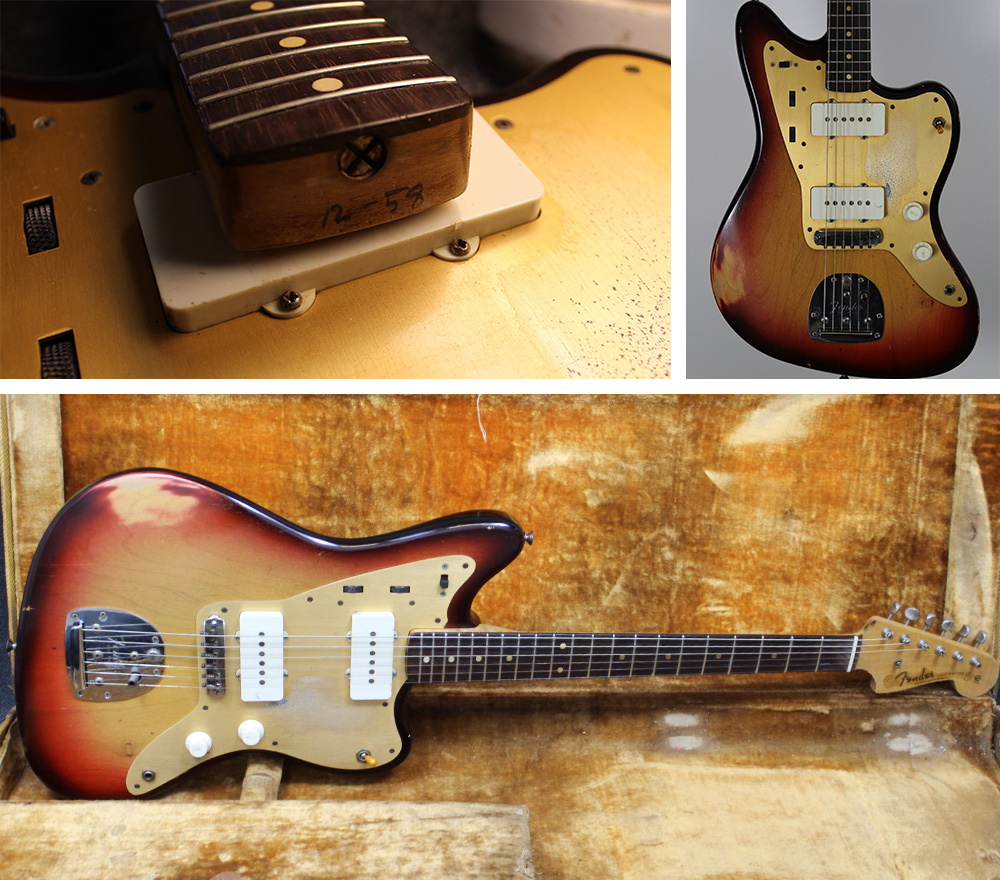
Was the Jazzmaster really aimed at jazz players?
Not too much, it was mostly country western, and then when that rock'n'roll thing started up, well—I can't stand rock'n'roll. That's where the sound started, as you know. But it's one of those things where I have to ask forgiveness every night that I had anything to do with it, because to me, the way these guys get up and they play so loud, when you reach above a certain decibel in sound, to me it's not entertainment, it's torture. I can't stand it, it just drives me nuts.
I like easy listening, nice soft music. I don't even like singing. I wish people'd keep their mouth shut and just play their instruments. A nice soft string section, that's my favorite music. I can't stand this rock 'n' roll crap.
How much influence do you think Fender had on other companies?
Man, the Stratocaster is the most copied guitar in the world—no other guitar is copied any more than Fender. Everyone tries to build a guitar looks like Fender. Les Paul would probably run second. I miss the music business so much. I miss those years, and I miss Leo.
About the author: Tony Bacon writes about musical instruments, musicians, and music. He is a co-founder of Backbeat UK and Jawbone Press. His books include The Stratocaster Guitar Book, The Telecaster Guitar Book, and Electric Guitars: The Illustrated Encyclopedia. Tony lives in Bristol, England. More info at tonybacon.co.uk.

